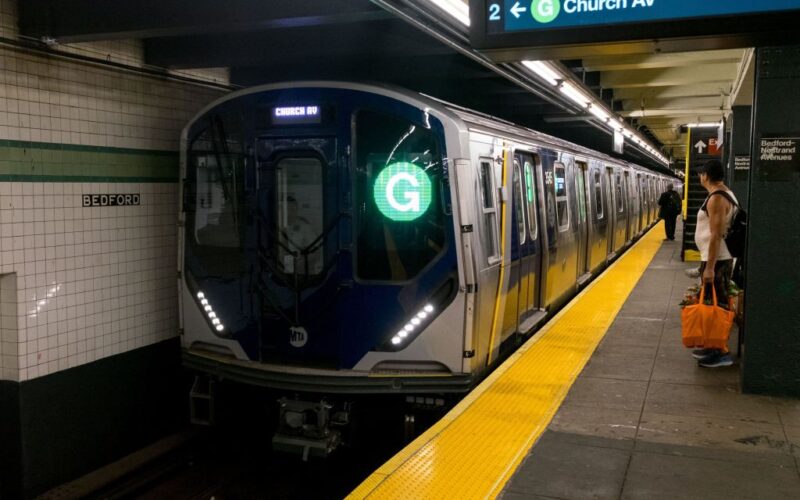The MTA’s plan to modernize signals on the G train will take longer than planned, transit officials said Monday, with an expected months-long delay to update equipment on the subway system’s newest train cars.
Transit officials said Monday that the radio transceiver system used to locate trains on the L line, the No. 7, and portions of the F train — the signaling system known as Communication Based Train Control system or CBTC — is already growing obsolete. As a result, the re-signaling efforts underway on the G line will be delayed as work begins to retrofit even the newest train cars to utilize newer 5G transceivers.
“That will take longer than the work we are doing on the G [line] itself,” Jamie Torres-Springer, MTA’s construction head, told the agency’s board Monday. “Putting CBTC into full operation on the G line overall will take longer than anticipated, but there are no additional disruptions to riders associated with this.”
The G train — known in transit-speak as the Crosstown Line — has been undergoing major renovations for more than a year. The process involved major outages last summer, and scattered night and weekend outages this summer.
Meanwhile, officials quietly moved the newest train cars, the R211s, onto the tracks of the G last month.
But even those cars, fresh out of the final assembly facility in Yonkers, do not have radios new enough to talk to the signaling system MTA’s construction team is building beneath Brooklyn.
Officials said Monday that the wireless network currently in use on CBTC lines like the L, the No. 7 train, and portions of the F is already old enough that they aren’t confident that manufacturer Siemens will continue to offer support or spare parts for very long into the future.
“When we started off Crosstown, we realized nobody is developing the communication system,” said MTA’s deputy chief development officer Mark Roche. “Siemens, who designed it and provided it, no longer even invests in it — there’s no updates to the software, there’s no updates to the hardware.”
“We made the decision at the beginning of Crosstown to change the communication system.” Roche added. “The fact that we made the decision to build the program properly is going to make that project slightly delayed.”
The MTA board’s Capital Program Committee voted Monday to approve a $47 million modification to a contract with Hitachi on Wednesday that would pay the firm to add updated 5G wireless radios to the system’s R211 train cars.
Transit sources familiar with the work told the Daily News that the job would not require a major overhaul of the existing R211s. But the updates to the trains is expected to take time.
Torres-Springer and other MTA officials characterized the delay as small. CBTC is expected to come online north of the Hoyt-Schermerhorn station by the end of 2027, and between Hoyt-Schermerhorn and the southern G train terminal at Church Ave. by the end of 2028.
In it’s monthly report Monday, however, engineers with Michael Baker International, the MTA’s independent engineering consultant — tasked with offering an independent assessment of the agency’s capital projects — estimated the project could be delayed into summer 2029 if third party contractors like Hitachi could not meet their deadlines.
Originally Published:







